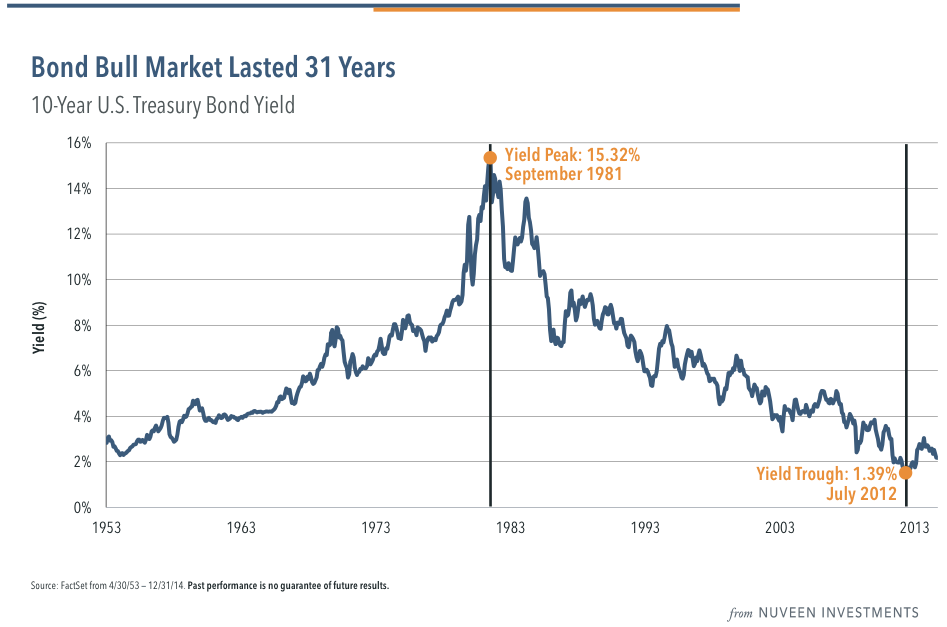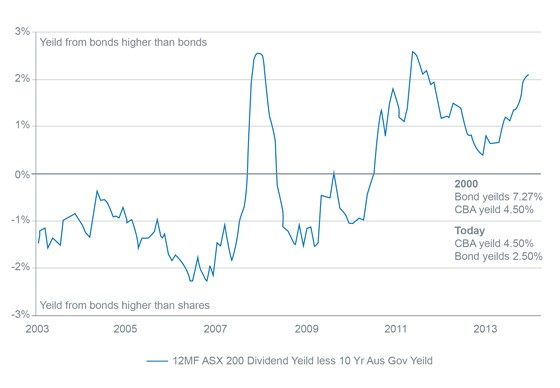What To Look For In The Bond Market In 2015
Post on: 19 Сентябрь, 2015 No Comment

By Itziar Aguirre
Investors are nervous about the state of the US bond market in the face of recent yield drop-offs. Here are some expectations for the bond market in 2015.
The day after midterm elections placed Republicans in firm control of both houses of Congress, US stocks soared to new highs, with the Dow Jones Industrial Average rising 100 points to a 20th record of 2014. As of September 30, close to 2 million new jobs have been created year-to-date, up from the 1.7 million new jobs created during the same period last year.
American households also have earned an extra $129 billion in real discretionary income, entering the fourth quarter. Primarily attributed to higher wages, this additional income has accounted for 2.4 percentage points of the 4.2% year-over-year growth in disposable personal income.
However, it is not all good news. While the individual American seems to be doing better on margin than at the same time last year, 2014 has been one of the worst years for bond investors.
Although economists have been trying to understand why yields have been falling, there is no simple answer. Reasons behind this depressed bond market could stem from domestic concerns such as investors wary of deflation.
But the contribution of international forces cannot be discounted. With geopolitical tensions due to the Russia-Ukraine conflict and the rise of ISIS in the Middle East, even the spread of Ebola may be contributing to the lackluster bond yields.
Ironically, the near-record-low yields on US bonds seem like a bargain when looking at German government bond yields, now well below 1%. The state of German bonds seems reflect the current crisis facing the EU as a whole, with European Central Bank officials divided over how far they should go in pursuing bond purchases to thwart deflation.
How best to respond ?
How would Federal Reserve Chair Janet Yellen respond to stabilizing falling yields? Evidence suggest a no holds barred approach to stabilizing the market. Given the slow and unsteady nature of the recovery in the wake of recent recessions, unconventional policies that support economic growth and help reach certain inflation targets could be necessary at this point.

With the global crisis and slow and unsteady recovery underlining the importance of government-based stimulation of economies during downturns, Yellen admits that a major lesson learned is the need of a stable financial industry backed by effective regulation and supervision. In an effort to support this goal, the Federal Reserve has pledged to communicate its monetary policy strategy transparently to diminish the likelihood of any surprises that could rattle financial markets.
Such an approach could work well with a transparent Fed. Long-term bond yields are traditionally driven by growth and inflation expectations. Despite anemic growth during the first half of this year (hovering at 1% due to the remnants of last years harsh winter), US economic growth has picked up during the second half, growing at roughly 3%. The Federal Reserve expanded its balance sheet by over $1.6 trillion during the third round of quantitative easing. Two-thirds of the companies in the S&P 500 index reported third-quarter earnings, beating expectations by about 5%, or double the predicted growth rate.
Even with this positive news, there has been no shortage of speculation among investors that the collapse of global growth is the catalyst behind falling energy prices these past four months. But optimists insist that this is simply a result of too much supply, pointing to lower pump prices as a function of higher discretionary income.
The bottom line
The Fed has been tightening policy for the last ten months by curtailing asset purchases, with an imminent rate hike likely to push yields higher over the next year. If historical trends are examined, the yield on 10-year Treasury bonds rose heading into the first rate hike in June 2004 before dropping immediately after. Although it resumed its rise 12 months later in June 2005, the market has since repeated itself, most notably over the past year and a half.
With the Fed planning an exit from its controversial Quantitative Easing (QE) program, this year could be the first step towards monetary tightening in this economic cycle. This is ultimately good news as global equity markets should anticipate an 18-month rise in bond yield markets as 2015 begins.














